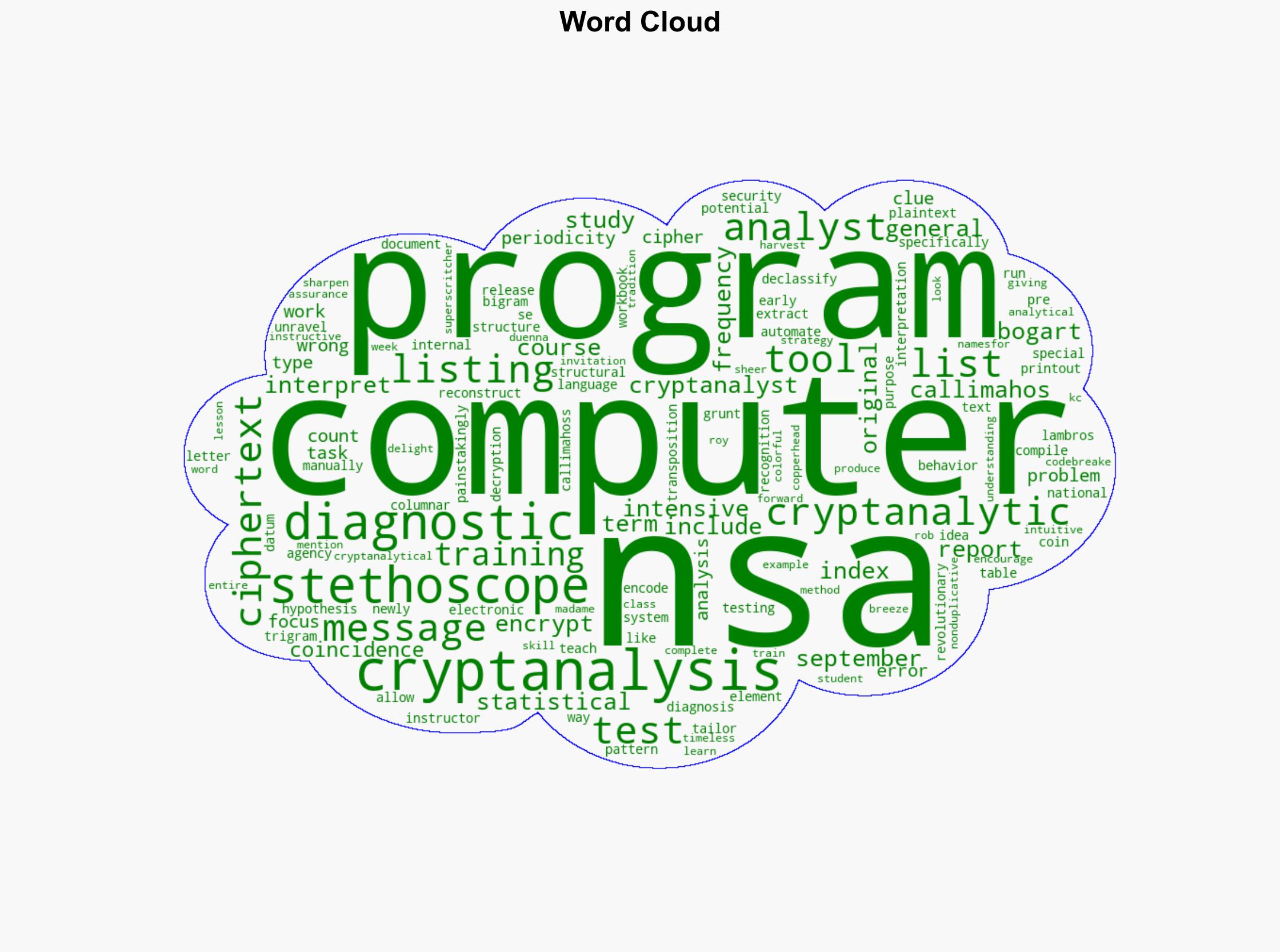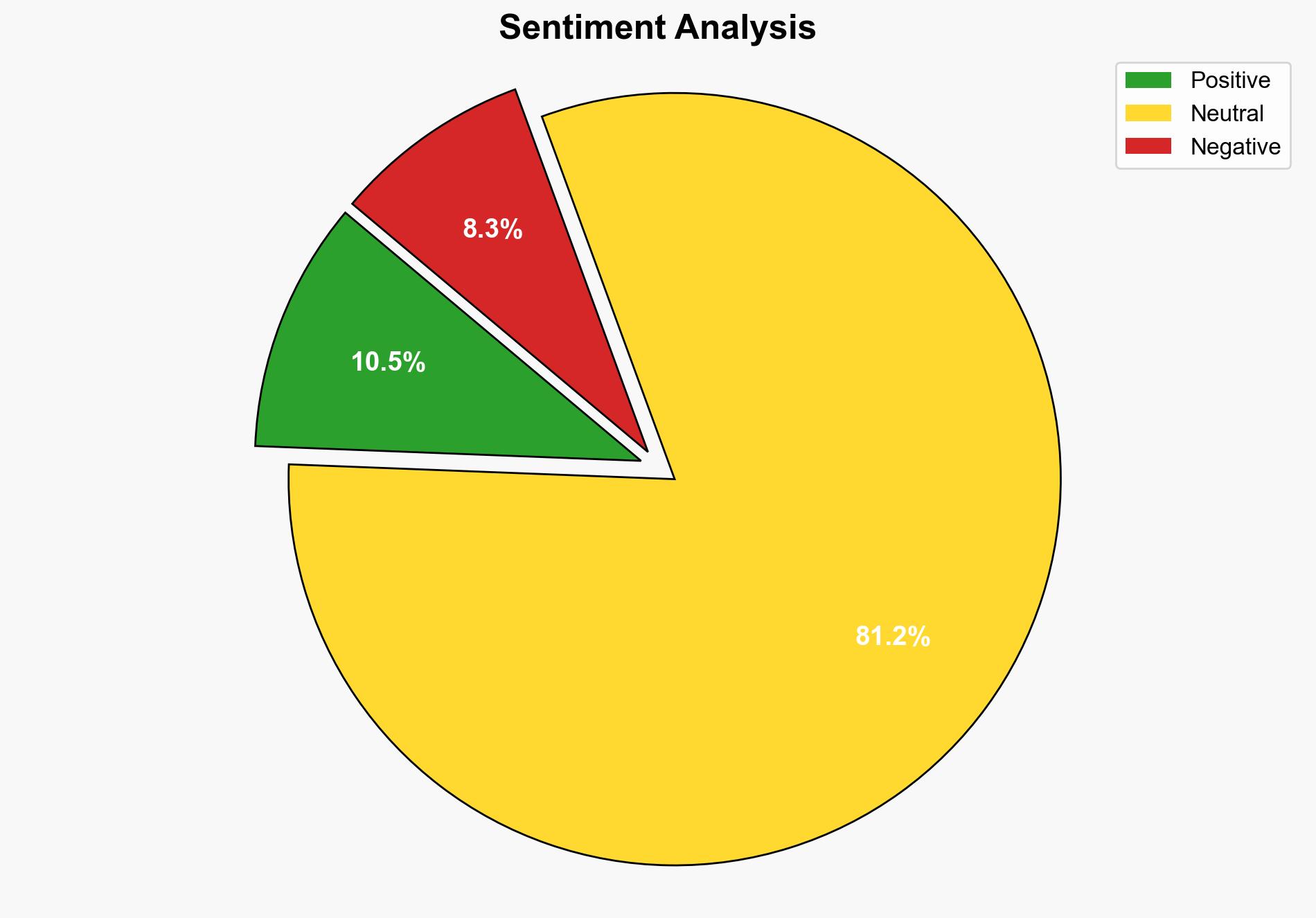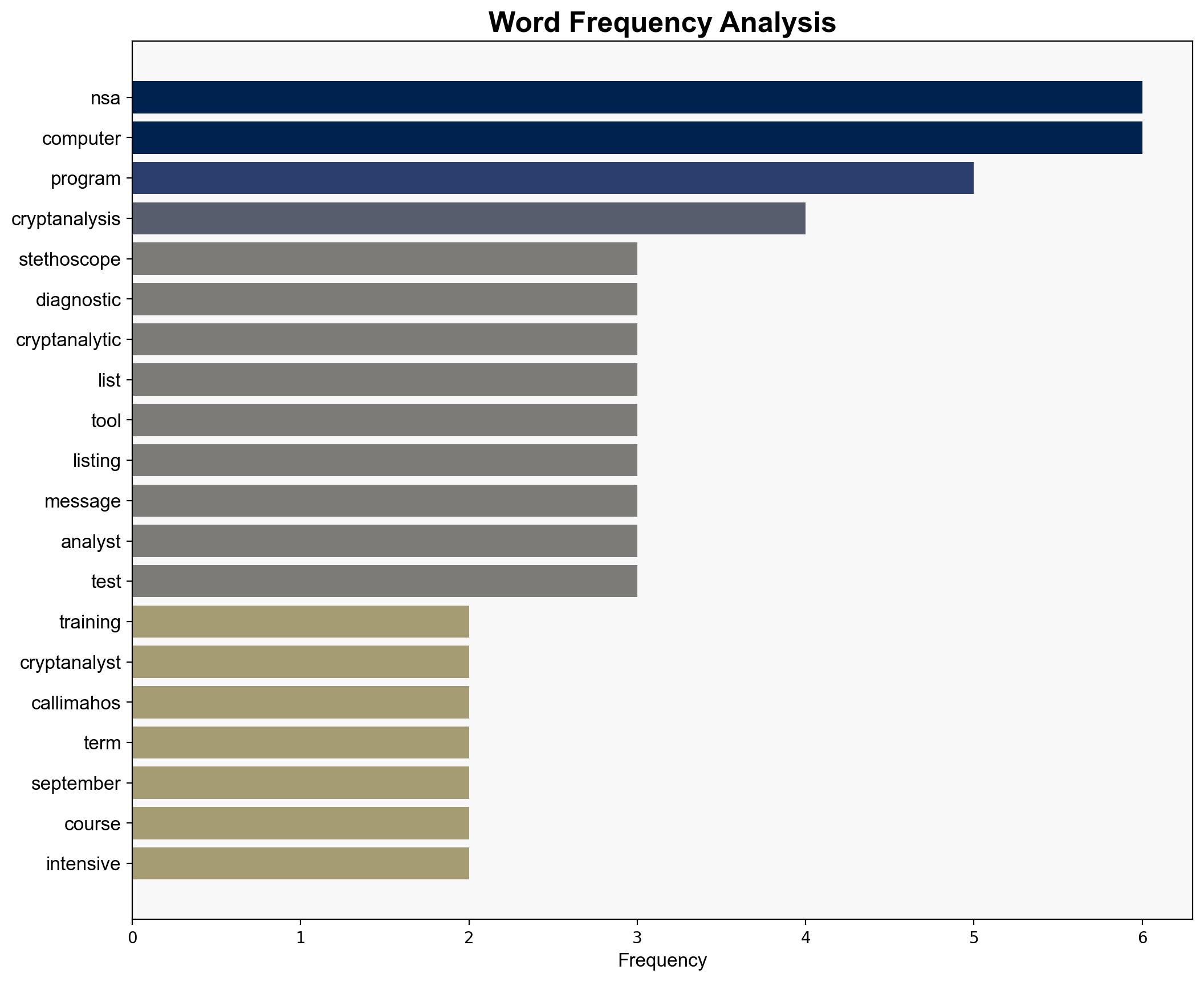1965 Cryptanalysis Training Workbook Released by the NSA – Schneier.com
Published on: 2025-09-02
Intelligence Report: 1965 Cryptanalysis Training Workbook Released by the NSA – Schneier.com
1. BLUF (Bottom Line Up Front)
The release of the 1965 Cryptanalysis Training Workbook by the NSA suggests a strategic move towards transparency and historical documentation of cryptanalysis techniques. The most supported hypothesis is that this release aims to enhance public understanding of cryptanalysis history while maintaining current operational security. Confidence level: Moderate. Recommended action: Monitor for further declassifications that may indicate shifts in NSA’s transparency policy.
2. Competing Hypotheses
1. **Hypothesis A:** The release is intended to promote historical transparency and public understanding of cryptanalysis evolution, without compromising current methods.
2. **Hypothesis B:** The release is a strategic deception to mislead adversaries about the NSA’s current cryptanalytic capabilities and focus.
Using ACH 2.0, Hypothesis A is better supported due to the historical nature of the document and the lack of current operational details. Hypothesis B lacks substantial evidence, as the document does not reveal contemporary techniques.
3. Key Assumptions and Red Flags
– **Assumptions:**
– The document does not contain sensitive current methodologies.
– The NSA’s intent is genuine in promoting transparency.
– **Red Flags:**
– Potential for adversaries to misinterpret the release as indicative of current capabilities.
– Absence of context regarding the decision to declassify now.
4. Implications and Strategic Risks
The release may influence public and academic discourse on cryptanalysis, potentially leading to increased interest in historical cryptanalytic methods. However, there is a risk that adversaries could exploit perceived gaps in NSA capabilities. Geopolitically, this could lead to miscalculations regarding U.S. intelligence capabilities.
5. Recommendations and Outlook
- Monitor subsequent declassifications for patterns indicating broader transparency initiatives.
- Engage with academic and public sectors to contextualize the release, mitigating misinterpretations.
- Scenario Projections:
- Best: Enhanced public trust and academic collaboration.
- Worst: Misinterpretation leading to adversarial strategic shifts.
- Most Likely: Increased academic interest with minimal operational impact.
6. Key Individuals and Entities
– Lambros Callimahos: Instructor and cryptanalyst associated with the workbook.
– Rob Roy: Mentioned in the context of NSA diagnostic tools.
7. Thematic Tags
national security threats, cybersecurity, cryptanalysis history, intelligence transparency




